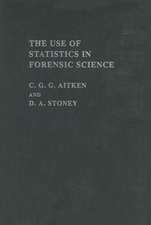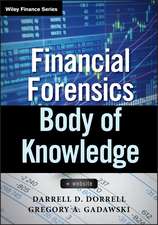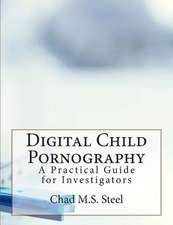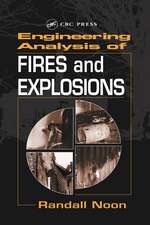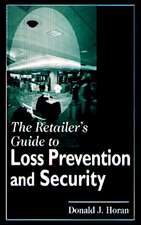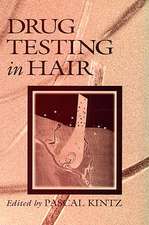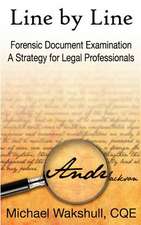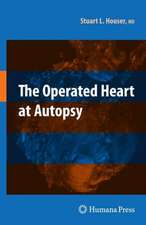Skeletal Atlas of Child Abuse: Springer’s Forensic Laboratory Science Series
Autor Jennifer C. Love, Sharon M. Derrick, Jason M. Wiersemaen Limba Engleză Hardback – 18 aug 2011
Despite the frequency of child fatalities (in America, 2.3per 100,000) attributed to physical abuse, merely recognizing the offense is a major forensic challenge. The tell-tale signatures of non-accidental injury can be very subtle, making it difficult to differentiate between accidental and non-accidental injury. Yet successful adjudication of a child abuse case often rests on the correct interpretation of skeletal injury.
In this volume the authors guide the reader through published data regarding the mechanics and interpretation of injuries,including the agencies they indicate. The material includes discussion of the limitations faced in interpreting some injuries, where making a judgment on cause is tricky. In addition, a chapter on natural diseases affecting the bones provides a good overview of several conditions that are often invoked as 'mimics' of child abuse. Finally, this publication evinces the value of collaboration between the pathologist and the anthropologist.
| Toate formatele și edițiile | Preț | Express |
|---|---|---|
| Paperback (1) | 1213.46 lei 6-8 săpt. | |
| Humana Press Inc. – 23 aug 2016 | 1213.46 lei 6-8 săpt. | |
| Hardback (1) | 1433.23 lei 38-45 zile | |
| Humana Press Inc. – 18 aug 2011 | 1433.23 lei 38-45 zile |
Preț: 1433.23 lei
Preț vechi: 1861.34 lei
-23% Nou
Puncte Express: 2150
Preț estimativ în valută:
274.24€ • 287.36$ • 226.71£
274.24€ • 287.36$ • 226.71£
Carte tipărită la comandă
Livrare economică 07-14 aprilie
Preluare comenzi: 021 569.72.76
Specificații
ISBN-13: 9781617792151
ISBN-10: 1617792152
Pagini: 136
Ilustrații: XIII, 119 p.
Dimensiuni: 210 x 279 x 13 mm
Greutate: 0.61 kg
Ediția:2011
Editura: Humana Press Inc.
Colecția Humana
Seria Springer’s Forensic Laboratory Science Series
Locul publicării:Totowa, NJ, United States
ISBN-10: 1617792152
Pagini: 136
Ilustrații: XIII, 119 p.
Dimensiuni: 210 x 279 x 13 mm
Greutate: 0.61 kg
Ediția:2011
Editura: Humana Press Inc.
Colecția Humana
Seria Springer’s Forensic Laboratory Science Series
Locul publicării:Totowa, NJ, United States
Public țintă
Professional/practitionerCuprins
Skeletal Examination Method.- Skull Fractures.- Rib Fractures.- Fractures of the Vertebral Column, Sternum, Scapulae, and Clavicles.- Long Bone Fractures.- Healing and Interpretation.- Natural Disease May Mimic Child Abuse.
Recenzii
From the reviews:
“The atlas is a detailed guide to the role of the forensic anthropologist in the investigation of skeletal injuries. … Not only does the book give a good overview of the relevant literature on the topic, it also provides many excellent images of cases, both in situ and after processing. … very informative for both forensic pathologists and forensic anthropologists, especially in regions where the disciplines do not work together in cases of fatal child abuse, which is the case in most European countries.” (Saskia S. Guddat, Forensic Science, Medicine and Pathology, April, 2013)
“The atlas is a detailed guide to the role of the forensic anthropologist in the investigation of skeletal injuries. … Not only does the book give a good overview of the relevant literature on the topic, it also provides many excellent images of cases, both in situ and after processing. … very informative for both forensic pathologists and forensic anthropologists, especially in regions where the disciplines do not work together in cases of fatal child abuse, which is the case in most European countries.” (Saskia S. Guddat, Forensic Science, Medicine and Pathology, April, 2013)
Textul de pe ultima copertă
This illustrated guide to the role of the forensic anthropologist in investigating child abuse is an essential resource in one of the most contentious areas of forensic pathology. Not only does it supply a review of the literature in this field, but it illustrates the material with photographs from real cases investigated by the Harris County Institute of Forensic Sciences, which serves a population of four million people. Broken down into body regions and skeletal elements for ease of reference, the atlas facilitates the vital work performed by forensic anthropologists, who bring to the autopsy table a store of specialist knowledge that can turn a case.
Despite the frequency of child fatalities (in America, 2.3per 100,000) attributed to physical abuse, merely recognizing the offense is a major forensic challenge. The tell-tale signatures of non-accidental injury can be very subtle, making it difficult to differentiate between accidental and non-accidental injury. Yet successful adjudication of a child abuse case often rests on the correct interpretation of skeletal injury.
In this volume the authors guide the reader through published data regarding the mechanics and interpretation of injuries,including the agencies they indicate. The material includes discussion of the limitations faced in interpreting some injuries, where making a judgment on cause is tricky. In addition, a chapter on natural diseases affecting the bones provides a good overview of several conditions that are often invoked as 'mimics' of child abuse. Finally, this publication evinces the value of collaboration between the pathologist and the anthropologist.
Despite the frequency of child fatalities (in America, 2.3per 100,000) attributed to physical abuse, merely recognizing the offense is a major forensic challenge. The tell-tale signatures of non-accidental injury can be very subtle, making it difficult to differentiate between accidental and non-accidental injury. Yet successful adjudication of a child abuse case often rests on the correct interpretation of skeletal injury.
In this volume the authors guide the reader through published data regarding the mechanics and interpretation of injuries,including the agencies they indicate. The material includes discussion of the limitations faced in interpreting some injuries, where making a judgment on cause is tricky. In addition, a chapter on natural diseases affecting the bones provides a good overview of several conditions that are often invoked as 'mimics' of child abuse. Finally, this publication evinces the value of collaboration between the pathologist and the anthropologist.
Caracteristici
High quality images Ideal captions to enlighten the reader Authored by leading scientists and researchers




